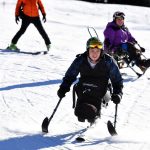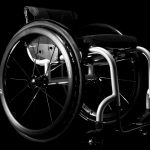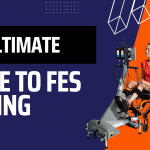Evidence collected by the Spinal Cord Injury Rehabilitation Evidence (SCIRE) project in Canada highlights that spasticity is a common symptom of a spinal cord injury (SCI). But what is spasticity and how is it best treated?
What is spasticity
Spasticity is a movement control disorder that happens when the brain and spinal cord are damaged or do not develop properly. It is usually experienced as involuntary muscle spasms, increased muscle tone, and overactive reflexes.
Spasticity is a common symptom of SCI that can affect as many as three-quarters of people with a SCI. It is more common among people with cervical and incomplete SCI. Spasticity can also be a symptom of other conditions like brain injury, stroke, and multiple sclerosis.
Spasticity can be experienced in different ways depending on the person and the characteristics of their SCI. Signs and symptoms of spasticity include:
- Muscles that are constantly and involuntarily tensed (increased muscle tone)
- Stiff muscles that resist movement
- Muscle pain and fatigue
- Muscle spasms or jerky movements
- Uncontrolled movements or difficulty coordinating movements
- Exaggerated reflexes
- Altered posture or positioning
Spasticity is different from normal muscle tension because the amount of tension depends on the speed that the muscle is stretched. Faster movement speeds cause greater tension and resistance to movement.
Management and treatment
There are many different treatments for spasticity. Every person’s spasticity is different, so finding the best treatment or combination of treatments often involves trial and error. Spasticity treatment usually starts with conservative treatments such as positioning and maintaining good muscle length. If these do not provide enough relief, spasticity medications and injections may be recommended. Surgical treatments are considered as a last option for severe spasticity.
Movement and therapeutic treatment options
There are a number of different movements, hands-on and electrical treatments that may be carried out on your own, with a caregiver, or in conjunction with a therapist. These treatments generally produce fewer side effects than medications or surgeries; however, they also tend to have short-term effects. These include:
- Posture and positioning – Good posture and positioning may help to keep the muscles at an appropriate length and help prevent contractures. You may need to work with your health providers to determine the best positions and equipment to manage your spasticity.
- Stretching and range of motion – Stretching and range of motion exercises are commonly used treatments to reduce spasticity and minimise complications like contractures after SCI. Stretching is often achieved through prolonged positioning, such as placing a wedge between the knees to stretch the hips.
- Bracing and casting – Various braces, orthoses and casts may be used to maintain proper positioning of the arms and legs to help reduce spasticity, improve function, and prevent complications.
- Standing – Standing can provide a prolonged stretch to certain muscles, such as the calf and hamstring muscles, which may help with spasticity. For some people, standing may be done using specialised equipment such as tilt tables, standing frames, and standing wheelchairs.
- Neurodevelopmental therapy (NDT) – Neurodevelopmental therapy(NDT, sometimes called Bobath therapy) is a type of physiotherapy and occupational therapy treatment where a therapist uses hands-on techniques to guide a person through movements. It is used to help practice quality functional movements.
- Walking – Walking may be done by some people (typically with incomplete SCI) with or without gait aids or assistance from health providers or with the use of specialized equipment such as body weight supported treadmill training or robotic exoskeletons.
- Functional electrical stimulation (FES) exercise – FES involves the use of electrical stimulation to activate specific muscles of the arms or legs during an activity such as stationary cycling, arm exercises or walking.
- Massage – Massaging muscles may help to stimulate the sensory nerves, which are part of the reflex spasticity response.
- Transcutaneous electrical nerve stimulation (TENS) – Transcutaneous electrical nerve stimulation (TENS) involves the use of electrodes placed on the skin to stimulate the sensory nerves without producing muscle tension.
Read more about Spasticity on the SCIRE Web site






Recent Comments